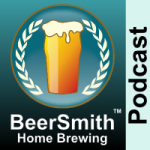Hit hard by the pandemic, breweries across the country are nonetheless finding ways to give back to their local communities.
The post In the Midst of a Pandemic, Breweries Are Giving Back to their Communities appeared first on CraftBeer.com.
Hit hard by the pandemic, breweries across the country are nonetheless finding ways to give back to their local communities.
The post In the Midst of a Pandemic, Breweries Are Giving Back to their Communities appeared first on CraftBeer.com.
Why the Adelaide brewery’s portfolio of products has evolved as they’ve grown.
The post The Little Bang theory of brewery evolution appeared first on Beer & Brewer.
The move will go some way to help combat China’s tariffs on Australian barley exports.
The post Asahi to buy barley direct from Aussie farmers appeared first on Beer & Brewer.
Sydney brewery’s expansion includes new tanks, canning line and dedicated barrel room.
The post Wayward to increase capacity by 25 per cent appeared first on Beer & Brewer.
New Zealand-Style Pale Ale and India Pale Ale added to BA’s style guidelines.
The post New Zealand Pale Ales added to style guide appeared first on Beer & Brewer.
New Kiwi hop receives its highest profile Australian release since being officially named.
The post Nectaron’s nectar shines in 4 Pines release appeared first on Beer & Brewer.
 Mathias Siebler, a 10th generation German hop farmer, joins me this week from Bavaria to discuss growing hops. Subscribe on iTunes to Audio version or Video version or Spotify or Google Play Download the MP3 File– Right Click and Save As to download this mp3 file. Your browser does not support the audio element. Topics […]
Mathias Siebler, a 10th generation German hop farmer, joins me this week from Bavaria to discuss growing hops. Subscribe on iTunes to Audio version or Video version or Spotify or Google Play Download the MP3 File– Right Click and Save As to download this mp3 file. Your browser does not support the audio element. Topics […]  Stan Hieronymus joins me this week to discuss hop breeding programs and some of the new hop varieties hitting the brewing market. Subscribe on iTunes to Audio version or Video version or Spotify or Google Play Download the MP3 File– Right Click and Save As to download this mp3 file. Your browser does not support […]
Stan Hieronymus joins me this week to discuss hop breeding programs and some of the new hop varieties hitting the brewing market. Subscribe on iTunes to Audio version or Video version or Spotify or Google Play Download the MP3 File– Right Click and Save As to download this mp3 file. Your browser does not support […]  I recently posted both yeast and hops updates for BeerSmith 3 and BeerSmith 2 to the add-ons server in BeerSmith. These are recommended downloads for BeerSmith users. These add-ons update the core yeast and hops listings to include new yeasts such as Kveik as well as some 63 new hop varieties. To download these updates, […]
I recently posted both yeast and hops updates for BeerSmith 3 and BeerSmith 2 to the add-ons server in BeerSmith. These are recommended downloads for BeerSmith users. These add-ons update the core yeast and hops listings to include new yeasts such as Kveik as well as some 63 new hop varieties. To download these updates, […]  Denny Conn and Drew Beechum join me this week to discuss hop techniques and brewing beers with unusual specialty ingredients. Subscribe on iTunes to Audio version or Video version or Spotify or Google Play Download the MP3 File– Right Click and Save As to download this mp3 file. Your browser does not support the audio […]
Denny Conn and Drew Beechum join me this week to discuss hop techniques and brewing beers with unusual specialty ingredients. Subscribe on iTunes to Audio version or Video version or Spotify or Google Play Download the MP3 File– Right Click and Save As to download this mp3 file. Your browser does not support the audio […] Calcium | Chloride | Sulfate | Sodium | Magnesium | Carbonate |
150 | 150 | 150 | 15 | 10 | 90 |